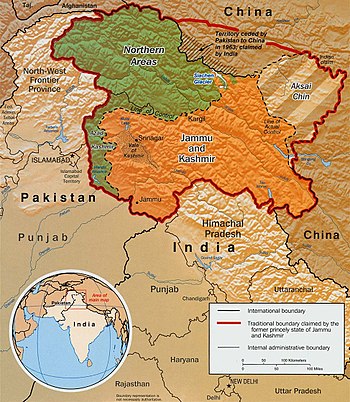 |
| The Disputed Territory : Shown in green is Kashmiri region under Pakistani control. The orange-brown region represents Indian-controlled Jammu and Kashmir while the Aksai Chin is under Chinese occupation. (Photo credit: Wikipedia) |
From unsigned notes revealed in 2009, it is known the two governments were contemplating a four point deal: the transformation of the Line of Control into a border; free movement across the LoC; greater federal autonomy for both sides of Jammu and Kashmir; and gradually-phased cutbacks of troops as jihadist violence declined.Peace in Kashmir is crucial. The Kashmir border should some day become like the Nepal-India border, because it is the same people living on the two sides. A lot of trade and people to people. contact will go a long way.
Pakistan is not a monolith. It has terrorists, but they also target the Pakistani establishment and its people. Its army is not exactly subservient to popularly elected leaders. The ISI is a hydra, half in dark, the other half also in dark. The left hand does not know what the right hand is doing.
Engaging Pakistan is a complex picture. When you engage the moderates, and make progress on trade and peace, you threaten the extremists in the army and the ISI: the hardliners do their best to scuttle peace efforts. Because if there is peace between India and Pakistan, they become irrelevant inside Pakistan. So when they disturb, don't blame it all on the moderates you are engaging with.
Normalized relations with Pakistan will add 1% to India's growth rate.
General Kayani himself, in speech delivered in 2010, endorsed the jihadi project, saying “There is no greater honour than martyrdom nor any aspiration greater than it”. “The army is the nation”, he concluded, “and the nation is the army”.





